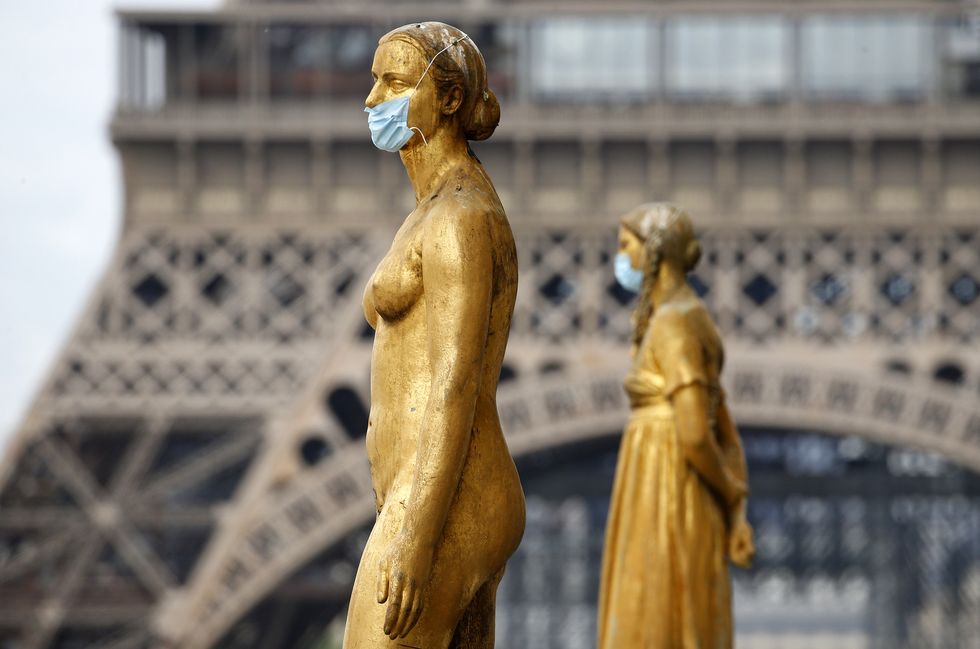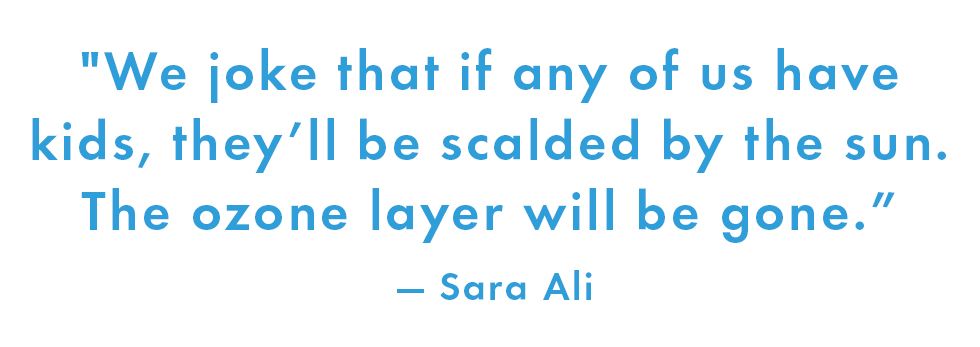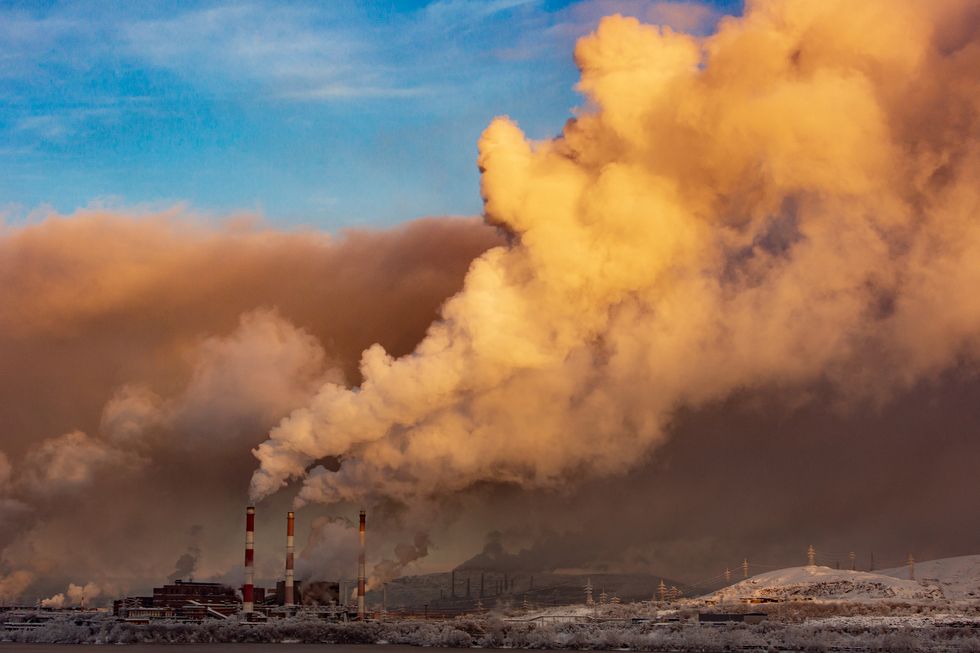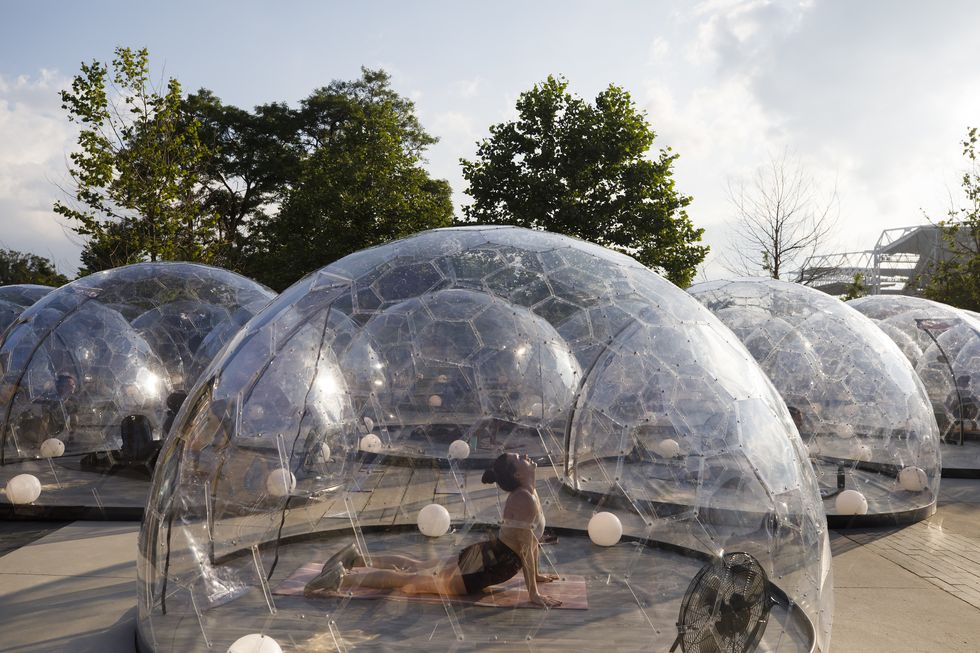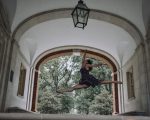The original post is located at www.elle.com
“When I think about the future,” Kyana Moghadam, 36, says over plates of lukewarm rigatoni at an overpriced Williamsburg café. “I go blank. There’s just nothing there. It’s a sense of horizonlessness.” She seemed almost surprised by the word.
But I knew exactly what she meant.
A Bay Area-based multimedia journalist and audio producer, Moghadam is a friend I consider successful by any metric. An activist, storyteller, and trained oral historian, she’s social, healthy, smart, stunning, and well-traveled. The sort of woman that seems, at least on social media, to have a thriving life, but there she was, describing herself as just sort of existing.
While she’d never fantasized about the white picket fence life, by her early 30s, she’d hit many of its traditional milestones: longtime boyfriend, close-knit community. She’d even managed to buy a house. But she felt like she was going through the motions. Then, just before the 2020 lockdown, her relationship ended, and she lost her father to suicide.
The domestic underpinnings of her life, however ambivalent she’d been about them, were gone. Originally from Iran, her father had died in the U.S. across the country from where she lived, but she couldn’t gather his remains until last year, or travel to Iran to return them to family. Her aloneness was exacerbated by a West Coast community made up of mostly nuclear families. “One person invited me into their pod,” she says. “And, you know, I sort of thought I’d have some offers.” She laughs. “But all my socials shut off. It was people with their partners and their kids, and their doors just shut. I didn’t even want a partner, but it felt like this is what you need to get through a time like this.”
Now, nearly three years into the pandemic, she’s hit with the sense that not only is her life as she knew it gone, but life as we knew it. “It feels like something that will never exist again in this world,” she says, not only of the domestic stability she’d taken for granted, but stability in any form. “In part, it’s the environment we’re in: climate change, the pandemic. Just how trashed so much stuff is. Because the pandemic took a couple years from us, it’s interesting to feel that way in your mid-30s. It’s too uncertain.”
I talked to others about horizonlessness. Almost everyone who felt it had experienced some personal loss or trauma that either dovetailed with or was exacerbated by the pandemic, and that the litany of concurrent or subsequent events—the ongoing existential threats of climate change, the overturning of Roe v. Wade, mass shootings, racist police killings, natural disasters abroad, and more—had caused them to feel disillusioned and destabilized in a lasting way. To arrive at a sort of nothing place.
Might that nothingness be a collective shield, I wondered, a defense against the overwhelming unknown of what next?
“Absolutely,” says Dr. Aditi Nerurkar, a physician at Harvard Medical School and an expert on stress and resilience. “Many of us were prepared for that short pandemic sprint. But the reason so many are feeling doom and gloom is because we didn’t prepare for the marathon,” she continued. “We went from an acute condition to a chronic one. That takes a cognitive leap that we were not trained to make.” The human brain, Nerurkar explains, is surprisingly resilient when it comes to short bursts of stress. But it needs to recover in between—not just emotionally, but biologically.
Many areas of the brain are involved in thinking about the future, but when feeling stressed, we’re governed by the amygdala. “When the amygdala is stuck ‘on,’ that’s when burnout happens. The amygdala is all about survival. About the here and now. It’s our primal instinct,” adds Nerurkar. “Our recovery periods are being cut short because of one crisis after the other.” There’s no energy to imagine the future when we can’t even process the present.
For Sara Ali, 27, a tech recruiter living in Honolulu, the onslaught of the last few years recalled the stress of living through 9/11 as a Muslim girl. Ali, whose family immigrated to the U.S. from Pakistan, was six years old when she came downstairs to see the towers collapse on TV. Her dad had Ali and her brother change into Old Navy T-shirts emblazoned with the American flag while he rushed out to buy more. Living in the States on visitor visas, the family had to return to Pakistan annually. After 9/11, they were constantly held and badgered by TSA and had their luggage searched, which gave Ali extreme nausea around travel. “I developed so much anxiety and fear for my brother and dad,” she says. “I was asked questions and couldn’t comprehend what was happening.”
“I had no hope for the future as a child. I didn’t want to be alive,” she says. Like many late millennials, Ali found refuge online and joy in memes and dark humor. “In my 20s, I’ve been blessed with some of the most incredible experiences of my life: getting married, traveling the world, going to every music festival I could’ve ever dreamed of—everything. But that has always been coupled with this sinking feeling in my gut of nausea or fear or guilt. That’s something that I’m working on eradicating.” In March 2020, she was 25 and life seemed to be on the upswing. She was finally making enough money to travel and go visit her family back in Pakistan. She was, for what felt like the first time, excited about the future.
“When COVID happened, I had some optimism about it, to be honest,” she says. “[I thought] maybe the world would rest and move away from what is so unnatural to us, which is what’s developed over the last 100 years. People working in rectangles under really bright light. Stuff like that.” But that optimism quickly dissipated as she grew sleepless and anxious not just about the virus, but the injustice and xenophobia it revealed. The sense of doom that colored her childhood was back. “When we started to realize how bad it was, I was like, oh my god, am I ever going to—and this is so privileged—be able to live these experiences that make me feel like there is hope for being alive? That sounds so dramatic, but I’m very dramatic, and that’s how I felt.”
Today, she and her friends lean into the fatalism that got Ali through her early traumatic experiences. “We probably enable each other in a negative way,” she says. “We’ll text each other: ‘Whatever, I’m probably gonna die in two days.’ We joke that if any of us have kids, they’ll be scalded by the sun. The ozone layer will be gone.” Her family isn’t a fan of her doomer humor, she says, demonstrating what Dr. Wendy Greenspun, a New York-based clinical psychologist and board member of the Climate Psychology Alliance of North America, sees as an increasingly common generational divide.
“I think that there’s some intergenerational stress now with younger people reporting that their parents don’t really understand their level of distress,” says Greenspun. “Or children of immigrants, where the immigrant parents are just focused on survival and making it in the world and having a better life, and the younger people are worried about their future. And so there’s a clash in the narratives or the focus on what feels most urgent or most important. That’s part of that social location. What are you most concerned about? What is impacting you the most?”
Solastalgia, or anxiety or malaise over climate change, is just the sort of mental marathon Nerurkar says our brains are not prepared for. Not unlike pandemic grief, it can trigger a sense of overwhelming uncertainty—it feels unending, bigger than any one of us. Part of the nascent, but fast-growing field of climate-aware therapists, Greenspun equates the job to working with clients who have chronic illnesses: it’s less about finding a cure and more about understanding, acceptance, and finding new ways to manage and even thrive. “It’s not a trauma that we just get over,” she says. “Usually, we’re working with people who are on the other side. There’s not another side of this.”
Even as she describes her view of the future as “dismal,” Ali is newly married, a stepmother to a three-year-old, and successful in her field. She pushes relentlessly toward professional and personal goals. To hear her tell it, it’s almost as if the goals themselves—not the outcomes they promise—keep her going. “Even if I’m dying on the inside, I’ll show up and interview my candidate and do my job. There’s an impending doom that if I don’t do this, I’ll slowly slip away,” she says. “What’re those Iggy Azalea lyrics? ‘No money, no family, sixteen in the middle of Miami.’ Immigrant families are all so afraid of failure.”
While Ali frames her stressors as common to the immigrant experience, there’s something very all-American, and generationally specific, about the chasm between what we were promised and what is happening around us in real-time.
“There’s this deeply rooted sense of getting to the next ‘thing,’” says Moghadam. “That life gets better there, or here, or with this, or that. It’s so hard to let go of. But I’m finding that I need things outside of work that are uniquely mine to keep me going, which is the opposite of how I felt in the past.”
After 10 years of climbing the journalistic ladder, she no longer subscribes to the idea of an “arrival” or endpoint. “After having been a part of so many systems, after building systems…that illusion of getting to the next thing, this ledge, is just gone. For me, it started with my dad. And for others, with the pandemic. You realize that it can all be taken away. That’s what loss does.”
For Jamié Rodríguez, 31, individual and collective losses over the last few years have crystallized into a new form of hope, albeit one tempered by caution. “Whether it be climate crises, policies, predatory lending, the ways that larger events and issues have affected my future, it’s made me precautious and calculated as to how I move toward it.”
An Indigenous Colombian, Mexican, Two-Spirit poet and scholar living in Los Angeles’ Boyle Heights neighborhood, Rodríguez was born the eldest daughter in a Latino family, and, like Ali and Moghadam, was driven to achieve. A first-generation high school graduate, they trekked to the base of Mt. Everest at 22 years old and are currently pursuing an MA in Latin American studies at California State University, Los Angeles.
But they’ve also struggled with suicidal ideation and the feeling that the future wasn’t made for them—despair predicated by their desire to live freely inside a system hostile to queer and trans BIPOC people. The ongoing stress of trying not to simply exist, but thrive, impacted their mental health. “In a lot of ways, it’s because I was trying to build a future for myself,” says Rodríguez, who lives with bipolar II disorder. “Under capitalism, I had to work so hard. There are intense mental health ramifications for BIPOC people in trying to think about a future. There’s reasons for me not being able to see my future.”
Through committing to collective growth and delving into their ancestral lineage of indigenous Mexican curanderas/x/e, or native healers, Rodríguez has reformed the future as a site of resistance and possibility. “Because I didn’t always feel I had a future guaranteed, it also didn’t feel prescribed. There’s a level of freedom for me,” they say. “When I think of the future, I can’t help but think of the past…and I realized that, for me, a Brown, trans, Two–Spirit person, everything I do is sacred. The losses are lessons and the wins are for my community,” they say.
Greenspun has seen clients experience something like what Rodríguez describes—a doubling down on the future, an increased ferocity of imagination in the face of bottomless, and in some cases, nameless loss. Clinicians call it post-traumatic growth, a transformational resilience that can develop after trauma. “I’ve had clients that end up changing careers from high-powered tech to green energy,” she says. “Going from being an actor to being a community gardener. There’s all kinds of ways that people start to change.”
“Collective experience is probably one of the most important tools we have to fight the sense of nihilism and hopelessness,” says Greenspun. “Individualism, in some ways, is at the heart of the difficulty, because we’ve been so disconnected from our sense of how we’re part of something bigger and that our individual actions impact other people.”
Still, she often has to prompt them to share environmental worries during sessions. “It’s sort of like, ‘Well, I’m supposed to talk about my individual problems, right?’ It’s so big. I find if I just ask clients if they have concerns about the future, or there’s a period of hot weather, and I say, ‘Does that make you think about climate change? And what are your feelings about it?’ they unleash a whole lot of distress.”
If the institutionalized divide between the individual and collective is what got us here, to a grief space that feels murky, Nerukar says it will articulate itself more in the next couple of years. It’s normal to be feeling the feels of that time more deeply now, she says. It’s similar to how you can plow through a stressful work or school situation only to get sick once everything is resolved. “You may not have felt this early on in 2020 or 2021,” she says. “But in 2023 and 2024, we are going to see so much more, because people are going to feel psychologically safe, and it’s all going to come out—what they endured.”
Maybe it’s been hard to articulate because we’ve been told that these parts of life are separate. That the personal is not professional. That our domestic lives should have little bearing on our output. That we should be able to turn off their attendant losses, traumas, and joys in order to either address what’s happening in the outside world or keep marching on in spite of it.
If inertia is the only thing keeping us going, if we stop, as Ali fears, do we fail to survive?
“Is this what we keep doing forever?” asks Moghadam.
“Sometimes I wonder what my future is really for,” says Rodriguez. “And I think, really, all I’m doing sometimes is bracing myself for impact. But also, I remember that I truly am protected by my ancestors, the saints me and my family have venerated since our colonization and that we have always been here. We’re only going to keep spreading and growing like vines.”
Maybe this is a time of unfolding. Of pausing to imagine what the future might look like if, as Rodríguez says, it wasn’t already prescribed.

